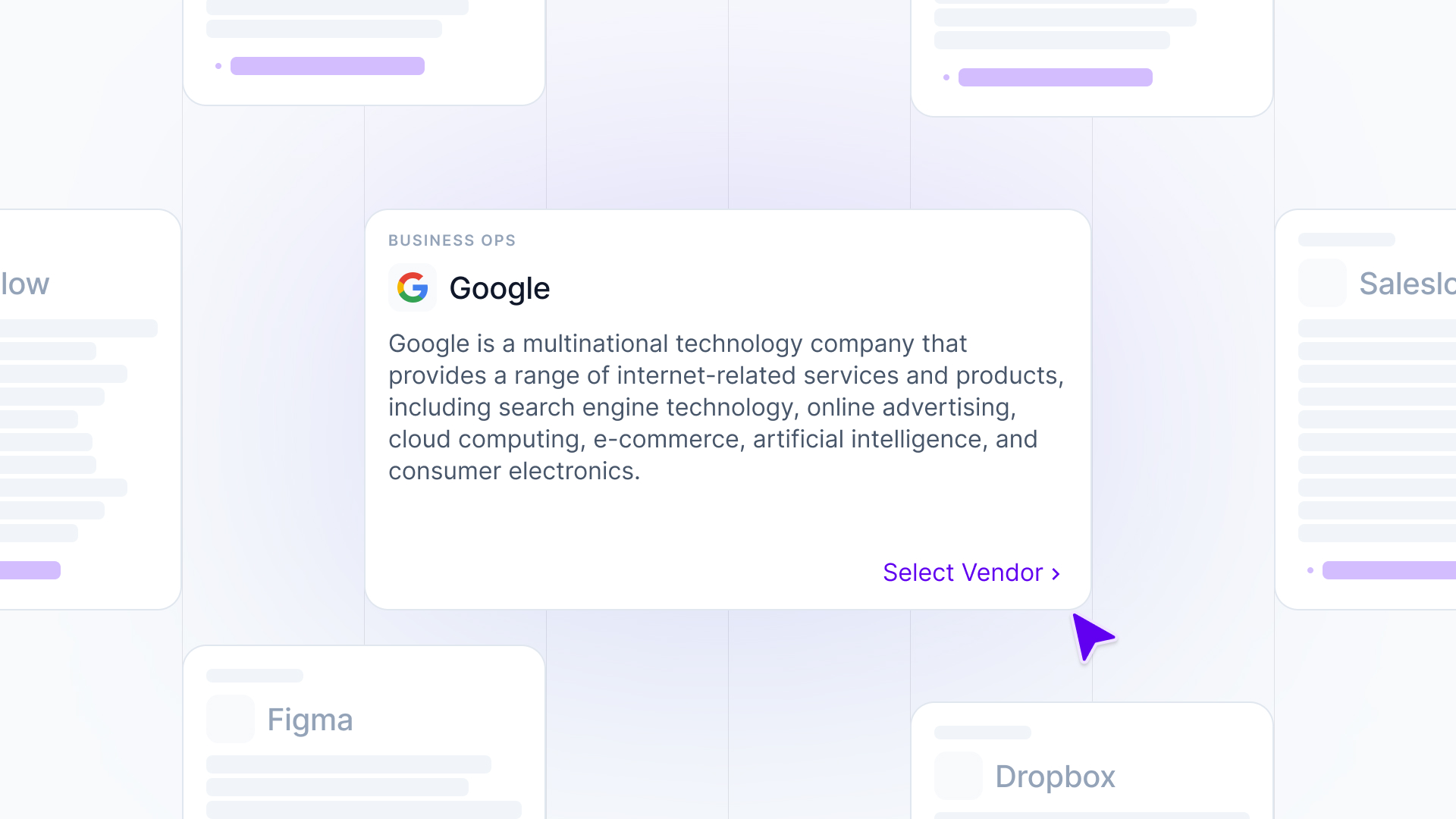Sneaky ways SaaS vendors are increasing prices

Take a self-guided tour of the platform.
See why Vertice is trusted by top procurement leaders.
Another day, another SaaS price increase. Or that’s how it certainly seems. The problem is, with the average company now using 110 software applications, it’s difficult to ignore the impact these rising costs will be having on your bottom line.After all, 38% of software providers have raised their prices in the last six months alone, including Microsoft, Salesforce, HubSpot and Google, and a survey from SaaStr found that 54% of SaaS companies are planning on doing so in 2023 and a further 24% are considering it.But while many SaaS companies publicly announce these changes — often using soaring inflation rates to justify their reasoning — other vendors have different approaches.Ones that are more subtle.So the question is, how are these companies increasing their costs if not by upping their list prices?,
Sneaky ways SaaS companies are raising prices
Here are some of the less obvious ways we’re seeing vendors increase the price of their software subscriptions.
Introducing new pricing models that work in their favor
Feature unbundlingOne of the ways in which SaaS vendors are able to subtly increase costs is by unbundling their product offering. In fact, this vendor pricing tactic is something we’re increasingly starting to see when renewing enterprise-level subscriptions.But what does this look like?Let’s say a user previously had access to ten different features as part of their plan. What we’re now beginning to see are vendors essentially unbundle these features at the point of renewal and include each of them as a line item charged at a fixed price.Combined, these features end up costing the user more than the previous ‘bundled’ plan did, despite the fact it’s the same offering as before.But what makes it worse, however, is that these vendors will specifically look at the features a customer is using and align the pricing to those that are being the most heavily utilized. In other words, the features actually being used will cost more.So, how are they getting away with this?In short, because of the overwhelming lack of pricing transparency across the SaaS industry. With no frame of reference on what other organizations are paying for their subscriptions, companies are often left in the dark when its comes to the prices they've been quoted, leaving them overpaying by an average of 20-30%.Feature bundlingIn addition to unbundling, we’ve also seen some software vendors do the opposite and bundle certain features into a single plan during the renewal process. A move that results in users paying for more functionality than they often require, while enabling the vendor to charge an uplift because of these “new features”., , , , A shift from drawdown contracts to monthly usage modelsAnother sneaky way that certain vendors are upping their costs is by moving from a pricing model that allows companies to adapt their usage over the course of their contract — drawing down on an agreed sum over a set period of time — to a fixed monthly usage model.In other words, a use-it-or-lose-it pricing model.The problem is, for some companies, usage requirements can fluctuate month by month. For example, online retailers are likely to experience peaks in traffic during certain months and may require more host monitors to ensure that the site has optimal uptime during these peaks.The flexibility that the existing usage-based pricing model offered was an effective way for these businesses to control costs across the year, without needing to spend more on a higher tier that wouldn’t benefit them for the majority of the contract, or risk being penalized in certain months by needing to pay hefty overage fees.
Hiding behind market inflation
The cost of just about everything is going up and businesses are under increasing pressure to raise their costs. SaaS price rises are therefore somewhat inevitable.It is, however, worth being aware that some vendors are using inflation as a scapegoat for justifying hefty price rises, despite the fact that SaaS pricing inflation is increasing at a rate that is four times higher than market inflation alone can account for.So, even though these vendors may be upfront about the fact they’re raising their software prices, they may well be hiding behind inflation rates as a way to substantially increase their fees.
Hiding behind price harmonization
It’s not just inflation that certain SaaS vendors are hiding behind to justify staggering price rises. It’s also this new concept of ‘price harmonization’.In recent months, companies including both Microsoft and IBM have announced that they will be making changes to their global pricing, to ensure that the prices being charged in all international markets are closely aligned to the US dollar. In other words, harmonizing their pricing models.While it can be argued this makes good business sense, it can’t be ignored that it will leave some customers paying substantially more for their subscriptions — up to 15% in many cases.,
How to mitigate the impact of rising software prices
So, what's the solution? How can you protect your business from the soaring cost of SaaS?
Arm yourself with economic data
Having an understanding of how SaaS pricing inflation compares to general market inflation can provide you with greater leverage in negotiations. In fact, it’s even recommended that you ask vendors to clearly explain their reasoning for hiking up their prices and use this economic data to make informed counteroffers.
Negotiate unique contract terms
While it’s true that some vendors may analyze your platform usage and effectively use it against you by increasing the price of the features your team uses the most, there are ways to mitigate against this impact.By digging into your own organization's SaaS utilization rates, you can begin to understand your actual requirements compared with contracted capabilities. So, as an example, you may be paying for 60 software licenses, when you only need 40 — figures that may not be entirely inaccurate given that 33% of licenses go underutilized in the average organization.Having a solid understanding of your company’s usage requirements can provide you with much-needed leverage, enabling you to negotiate unique contract terms., Having a solid understanding of your company's SaaS usage requirements can provide you with much-needed leverage, enabling you to negotiate unique contract terms.,
Obtain pricing intel with Vertice
Another way you can gain leverage is by understanding firstly what the competitors are offering and secondly what other companies similar to yours are actually paying.Gaining insight into the latter isn’t a straightforward process though. At least not without Vertice’s pricing intelligence. With access to a database of more than 13,000 global SaaS vendors, we can access this data, using it to secure the best possible price and contract terms on your behalf.Why not take a look at some of the vendor pricing and discounting insights that we’ve made publicly available here, or alternatively find out how much you could be saving on your annual SaaS spend with a free cost savings analysis.,

, , , , , , , , , , , , , , , , , , , , , , , , , , , , , , , , , , , , , ,
.webp)


![The Best SaaS Management Platforms for 2026 [According to Analyst Research]](https://cdn.prod.website-files.com/6640cd28f51f13175e577c05/687f56f6e55f8c0078341eb6_2025-06-Lionfish-Tech-Advisors-Report-01-1080x1080.webp)


.webp)